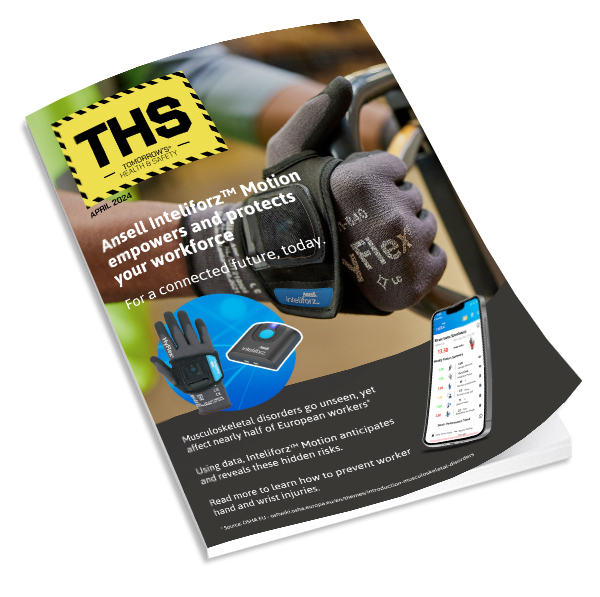You are here
- Home
- >
- Hotel fire doors – yet more evidence of our safety in jeopardy
Hotel fire doors – yet more evidence of our safety in jeopardy
Published on 29/11/2013
Following the BBC’s shocking exposé into the state of hotel fire doors and its impact on fire safety in the South West, the Fire Door Inspection Scheme (FDIS) is publishing the results of its own national survey into the five most common defects in hotel fire doors.
The BBC’s Inside Out programme is a follow up to its report on the fatal fire at the Penhallow Hotel in Newquay in 2007 and undercover filming in 14 hotels in the region. (http://news.bbc.co.uk/1/hi/uk/7001313.stm)
Five years since its initial investigations, serious fire safety issues are still being seen in hotels. The new programme will feature an interview with one of the guests trapped in a Bideford hotel fire last year as well as some interesting developments at the Grosvenor Hotel in Torquay, star of Channel 4’s ‘The Hotel’.
According to the latest fire statistics from DCLG, there were 595 fires in hotels in Great Britain in 2010/11. While the number of fires in hotels, guest houses and hostels has decreased since the introduction and increasing enforcement of the Regulatory Reform (Fire Safety) Order (RRO), awareness of these regulations is still very patchy.
Experienced fire door professionals and safety experts secretly checked a group of 17 hotels in Liverpool, Sheffield, Birmingham and Manchester. The FDIS researchers found problems in almost every one.
The 5 most common problems spotted in these hotels were:
• Ill-fitting doors in frames - 59% (10 hotels)
• Damaged fire doors - 47% (8 hotels)
• Fire doors propped open - 47% (8 hotels)
• Incorrectly fitted fire and/or smoke seals- 35% (6 hotels)
• Poor condition of fire and/or smoke seals - 35% (6 hotels)
This research supported the decision by the BWF-CERTIFIRE Scheme and the Guild of Architectural Ironmongers to launch the Fire Door Inspection Scheme earlier this year and to create the Diploma in Fire Doors, the first such qualification for hotel, office and other facilities managers, building maintenance and safety professionals.
What the industry stresses is that an effective fire door consists of much more than the door itself. A fire door is an engineered safety device that requires all of its components to fulfil their roles for the door to achieve its function. This includes the door frame, door closers, hinges and other ironmongery, glazed vision panels, signage and fire and smoke seals.
Picking up on this last point, John Fletcher, manager of the BWF-CERTIFIRE Scheme, said:
“The point about fire and smoke seals is incredibly important and very topical at the moment. We are hearing of a lot of misinformation currently circulating among hotel owners that a recent Government determination on this issue lets them off the hook when it comes to replacing defective fire doors.
“The BWF view and advice remains unchanged. We believe that it is always advisable to fit fire and smoke seals to fire doors, based not only on the position set out in Approved Document B of the Building Regulations but also on the evidence of 15 years of regular testing of our members' fire doors within the BWF CERTIFIRE Fire Door Scheme.”
www.fdis.co.uk
www.bwfcertifire.org.uk
The BBC’s Inside Out programme is a follow up to its report on the fatal fire at the Penhallow Hotel in Newquay in 2007 and undercover filming in 14 hotels in the region. (http://news.bbc.co.uk/1/hi/uk/7001313.stm)
Five years since its initial investigations, serious fire safety issues are still being seen in hotels. The new programme will feature an interview with one of the guests trapped in a Bideford hotel fire last year as well as some interesting developments at the Grosvenor Hotel in Torquay, star of Channel 4’s ‘The Hotel’.
According to the latest fire statistics from DCLG, there were 595 fires in hotels in Great Britain in 2010/11. While the number of fires in hotels, guest houses and hostels has decreased since the introduction and increasing enforcement of the Regulatory Reform (Fire Safety) Order (RRO), awareness of these regulations is still very patchy.
Experienced fire door professionals and safety experts secretly checked a group of 17 hotels in Liverpool, Sheffield, Birmingham and Manchester. The FDIS researchers found problems in almost every one.
The 5 most common problems spotted in these hotels were:
• Ill-fitting doors in frames - 59% (10 hotels)
• Damaged fire doors - 47% (8 hotels)
• Fire doors propped open - 47% (8 hotels)
• Incorrectly fitted fire and/or smoke seals- 35% (6 hotels)
• Poor condition of fire and/or smoke seals - 35% (6 hotels)
This research supported the decision by the BWF-CERTIFIRE Scheme and the Guild of Architectural Ironmongers to launch the Fire Door Inspection Scheme earlier this year and to create the Diploma in Fire Doors, the first such qualification for hotel, office and other facilities managers, building maintenance and safety professionals.
What the industry stresses is that an effective fire door consists of much more than the door itself. A fire door is an engineered safety device that requires all of its components to fulfil their roles for the door to achieve its function. This includes the door frame, door closers, hinges and other ironmongery, glazed vision panels, signage and fire and smoke seals.
Picking up on this last point, John Fletcher, manager of the BWF-CERTIFIRE Scheme, said:
“The point about fire and smoke seals is incredibly important and very topical at the moment. We are hearing of a lot of misinformation currently circulating among hotel owners that a recent Government determination on this issue lets them off the hook when it comes to replacing defective fire doors.
“The BWF view and advice remains unchanged. We believe that it is always advisable to fit fire and smoke seals to fire doors, based not only on the position set out in Approved Document B of the Building Regulations but also on the evidence of 15 years of regular testing of our members' fire doors within the BWF CERTIFIRE Fire Door Scheme.”
www.fdis.co.uk
www.bwfcertifire.org.uk
Categories
- CHAS AT SAFETY & HEALTH EXPO 2022
- Agriculture
- Asbestos
- Cleaning
- Compliance & Risk Assessment
- Conferences
- Construction
- Courts
- Culture & Behaviour
- Ear Protection
- Education
- Emergency Evacuations
- Events
- Eye Protection
- Feature
- Fire & Electrical Safety
- Floor Safety
- Gas Detection & Monitoring
- Hand/Arm Vibration
- Hazardous Substances
- Health & Safety News
- Health and Safety Executive
- Hospitals & Healthcare
- Human Factors & Ergonomics
- Hygiene
- In the Courts
- Legislation
- Lone Worker Protection
- Mental Health
- Noise Monitoring
- PPE
- Plant Machinery & Site Safety
- Products & Services
- Prosecutions
- Protective Clothing
- Protective Workwear
- Reports
- Respiratory
- Slips, Trips & Falls
- Standards
- Stress
- Technology
- Training & Development
- Transport & Logistics
- Webinars
- Wellbeing
- Whitepapers
- Work-related Diseases
- Working at height


















